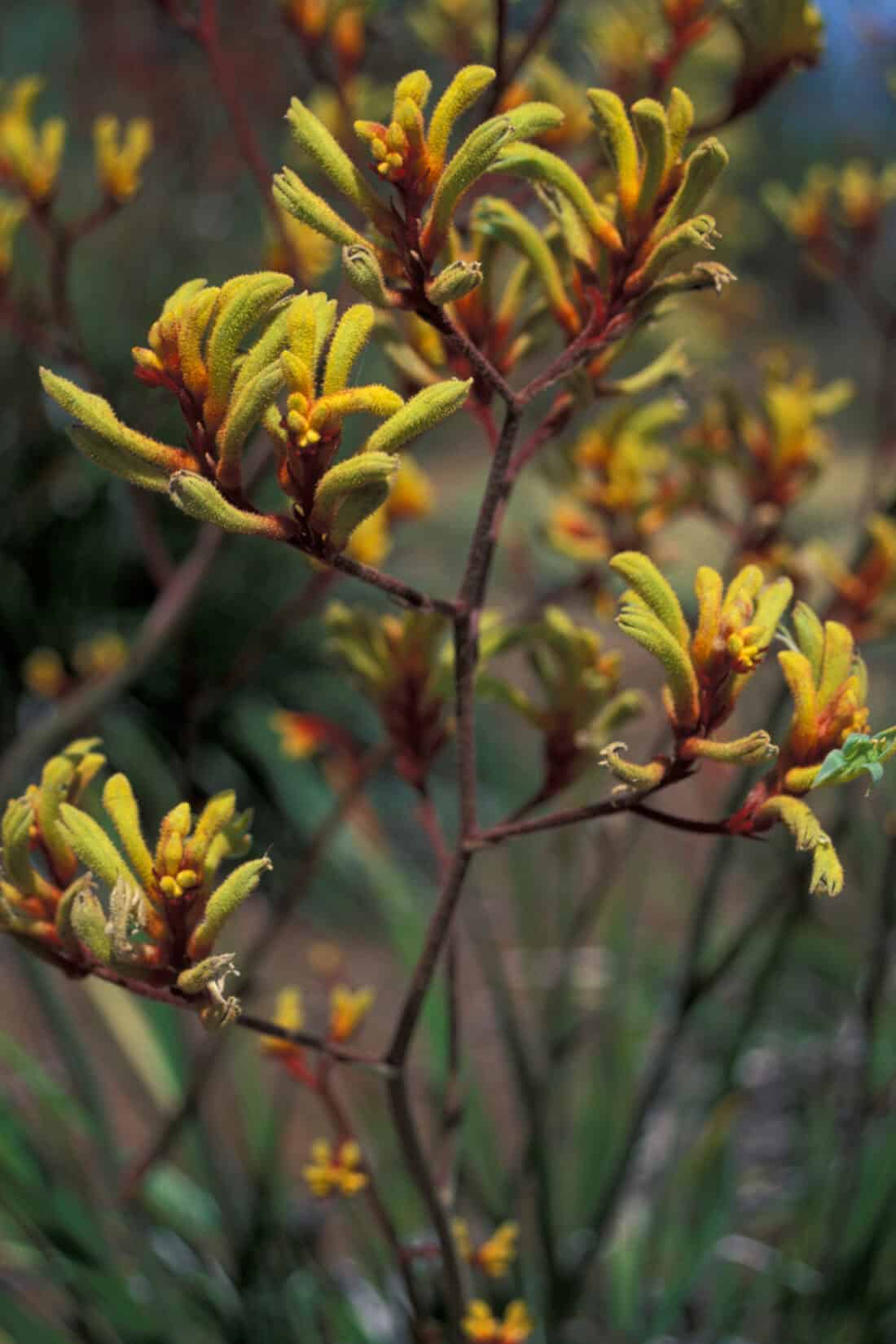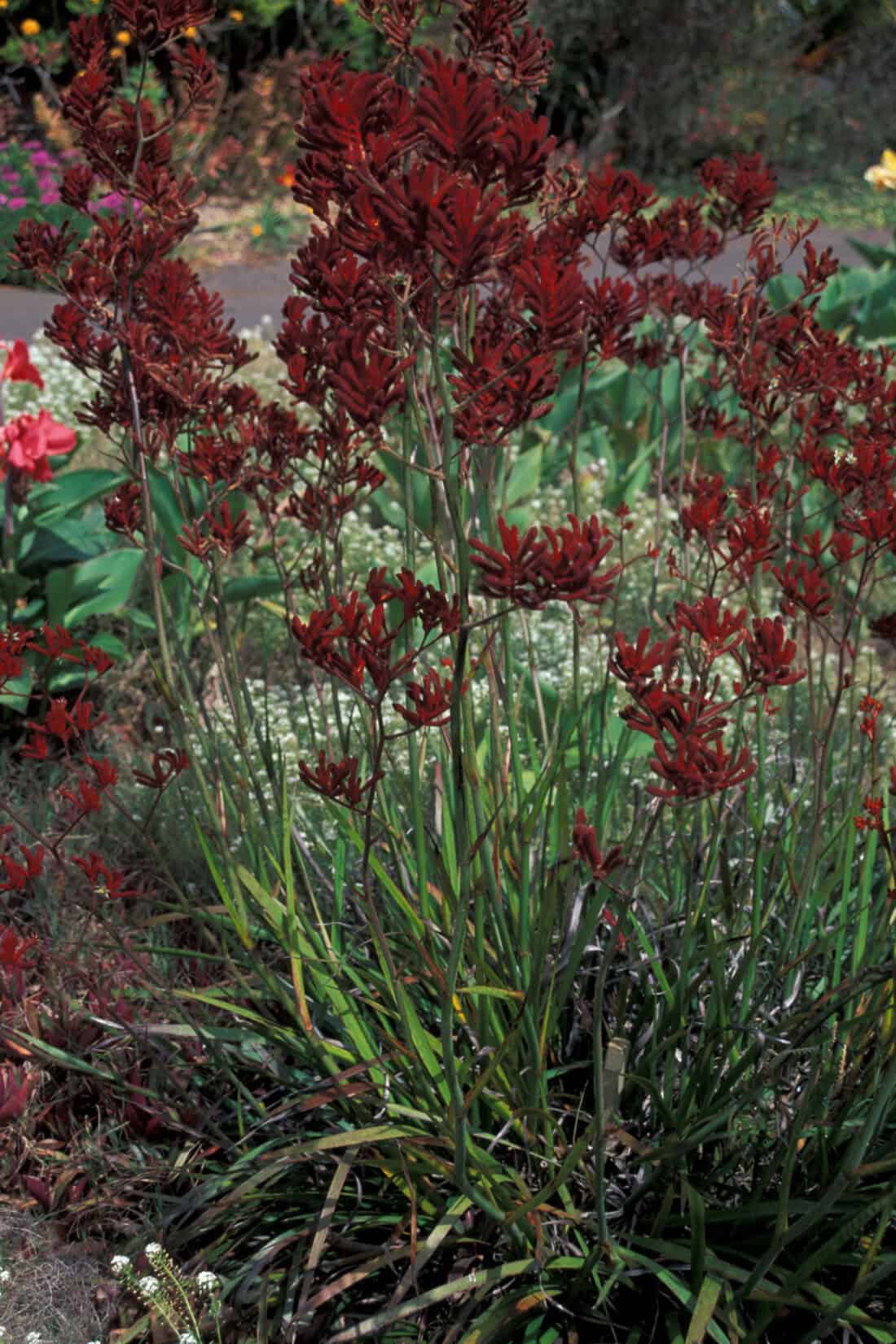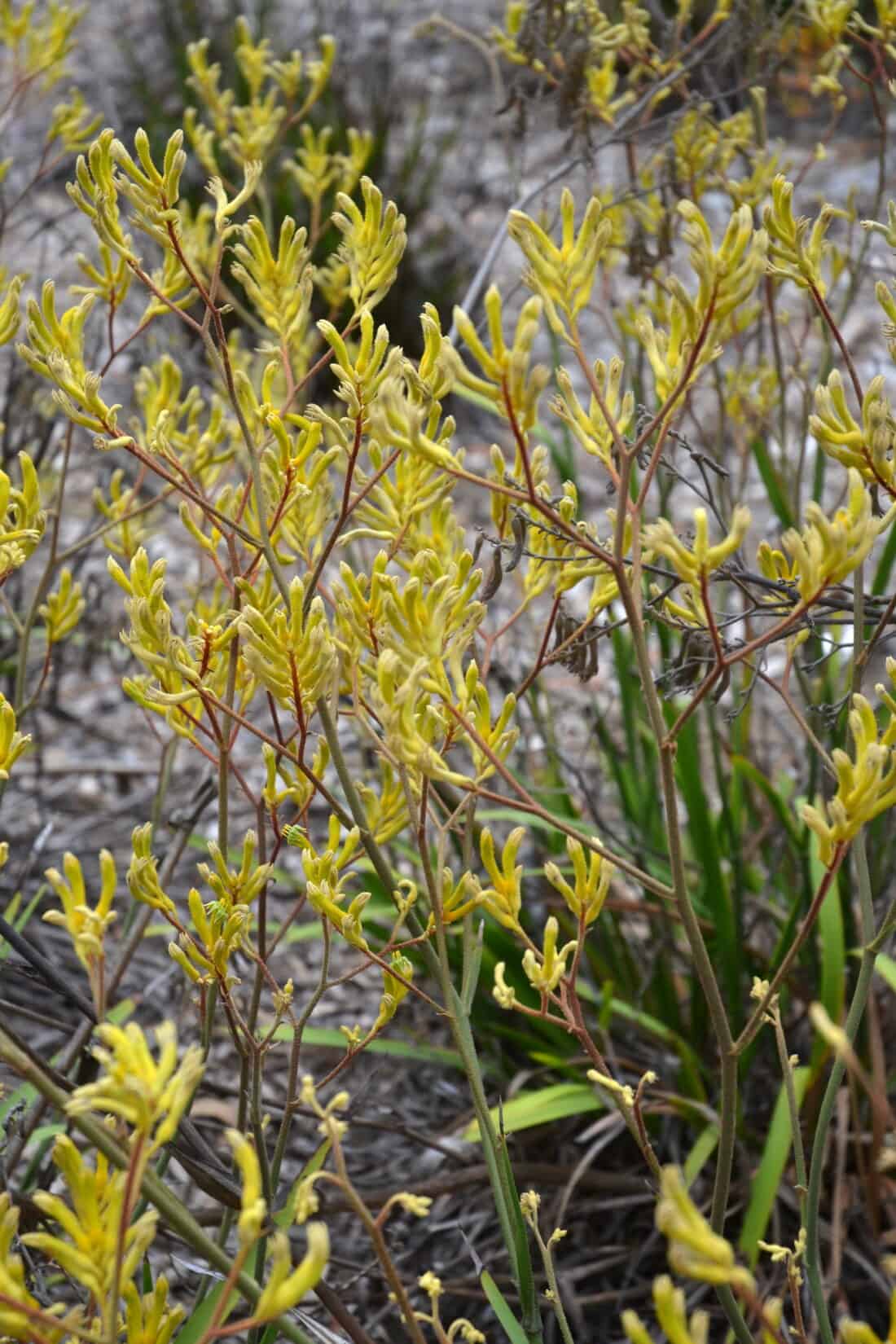Yes, I am opening this week’s blog with a line from that famous 80s hit by Men at Work. He just smiled and gave me a Vegemite sandwich. To follow up on that song which you will now have stuck in your head throughout the day, let me introduce you to a fantastic evergreen, perennial plant from the land down under (an annual in our climate). Kangaroo paw, or Anigozanthos, is a wonderfully showy and somewhat exotic flowering plant from southwestern Australia.
From what I can tell, Anigozanthos has been growing in California for some time as its climate is the most similar to Australia’s in the continental United States.

Growing Anigozanthos flavidus – Kangaroo paw
I first encountered this plant while touring nurseries in California and in the conservatories of Longwood Gardens. The foliage consists of green, strap-like leaves that emerge from the base of the plant. In the spring and again in the fall, plants produce a flowering stalk up to 6 feet in height. From these flowering stalks, the plants earn their nickname from the tubular flowers that resemble a kangaroo’s paw.
The flower buds are coated with tiny hairs that give them a rather unique appearance. They somewhat remind me of candied fruits. The flowers are brightly colored in shades of red, yellow, orange, and green, along with the more unusual white and black. Once the buds open, they have small, 6-petaled flowers. The flowering stalks also work well as cut flowers in floral displays, but truth be told, I would have a hard time cutting the flowers because they are so unusual.

What’s really cool is that a couple of nurseries are now offering Anigozanthos cultivars as annuals for us here in the eastern United States. I noticed today that both Sunny Border and Landcraft are listing kangaroo paws in their 2014 availabilities.
Most of these plants are hardy down to 25 degrees Fahrenheit, so they are just fine with a late spring or early fall frost. Grow Anigozanthos in full-sun, well-drained soil with moderate water and nutrients. If the plants dry out too much in a hot summer, they will go dormant. Summer dormancy is an adaptation to survive in their natural habitat.

I am adding Anigozanthos to my plant list for this summer’s displays. I am hoping to combine it with darker Phormium and maybe complement it with a Black Madras ornamental rice. Have you grown kangaroo paws before?
–Rodney
We are in California. A couple of years ago my kids bought 3 kangaroo paw plants for themselves, us, and grandma. None of them survived the year. Once the original bloom finished we cut them back, expecting them to grow back but all three plants were done. I do not know what we might have done wrong, but I was not impressed.
Hi there. Gorgeous plant but can be tricky to grow, even here in Australia.
We have many of these here in San Diego and they do quite well. According to Tovah Martin’s book “The Unexpected Houseplant” she has been successful at keeping kangaroo paws as a houseplant. I haven’t tried it, but they are lovely and I am tempted!
Great suggestion! Tovah is a fellow New Englander so I’ll have to check out her book. Thanks!